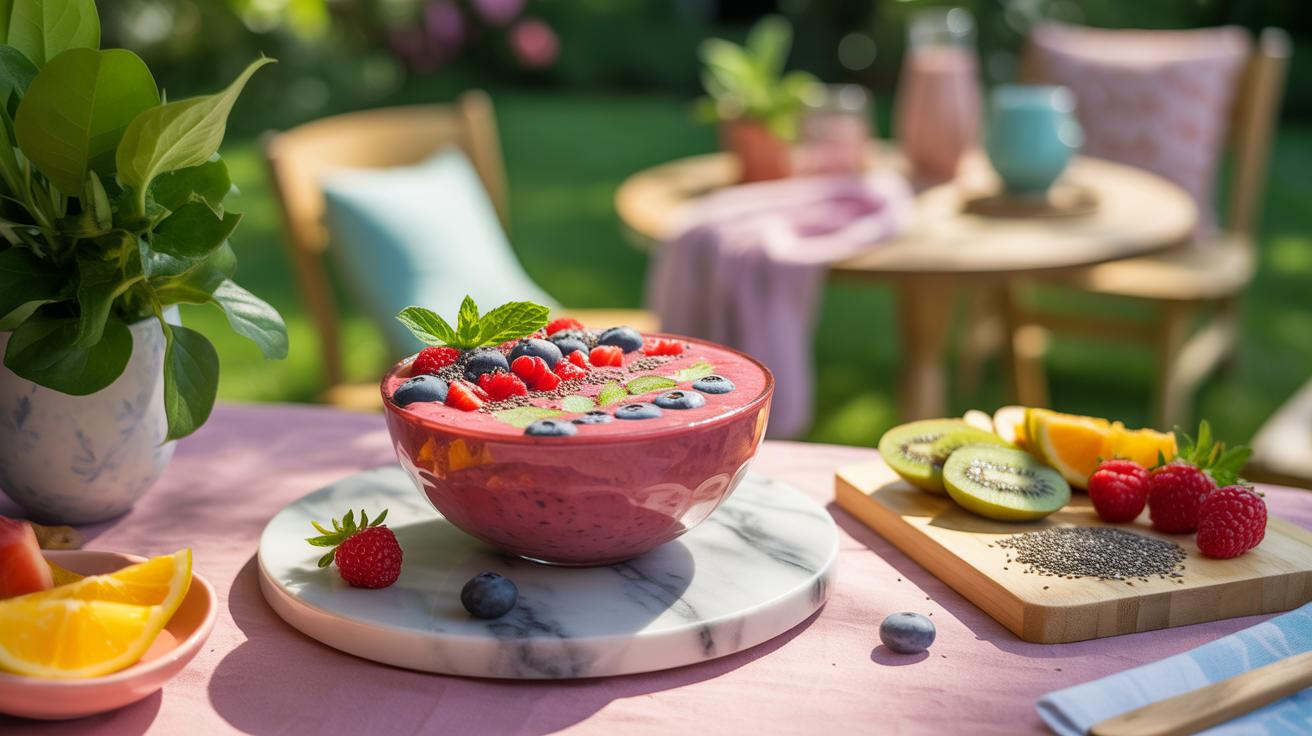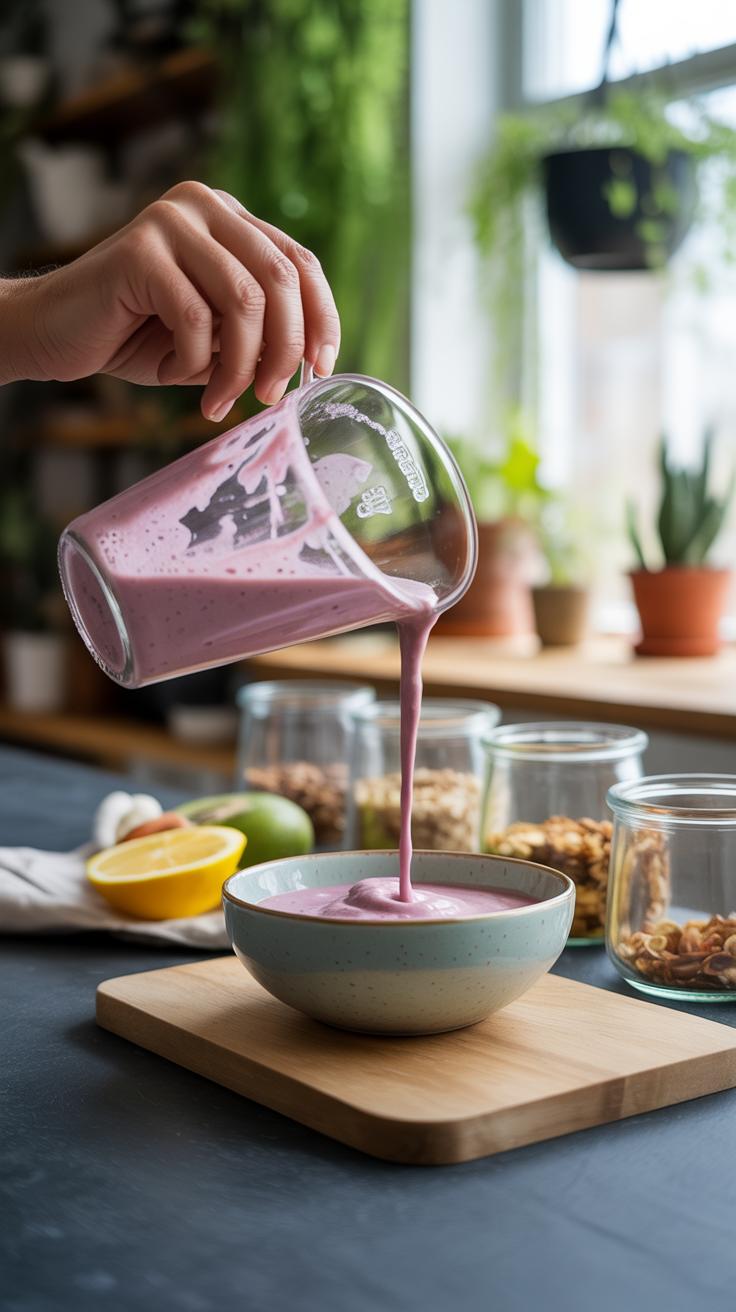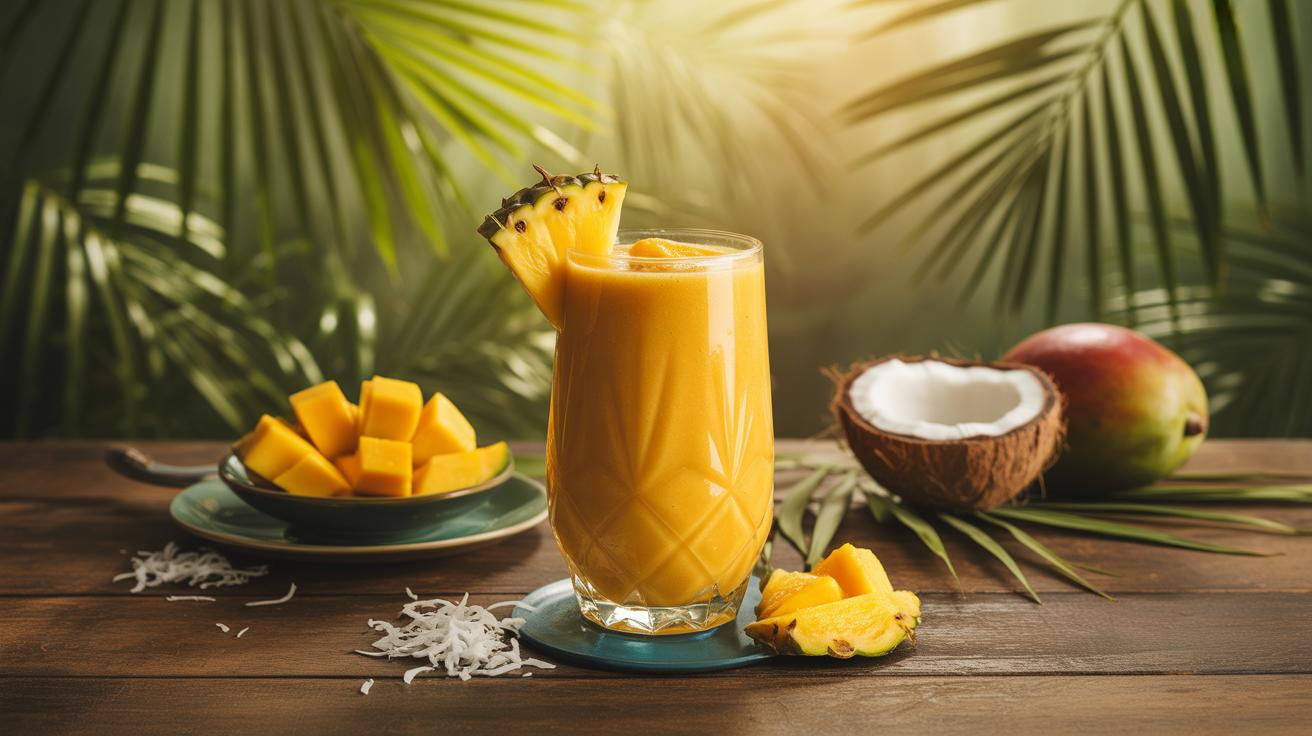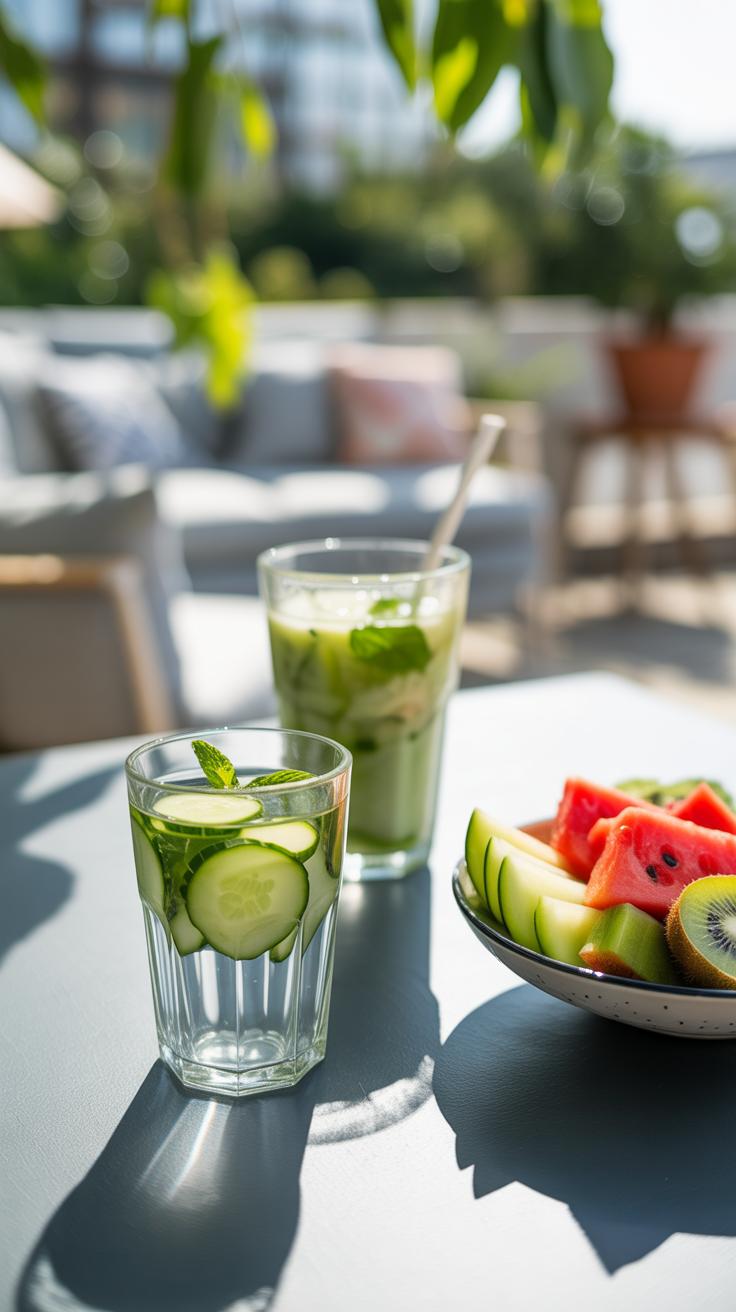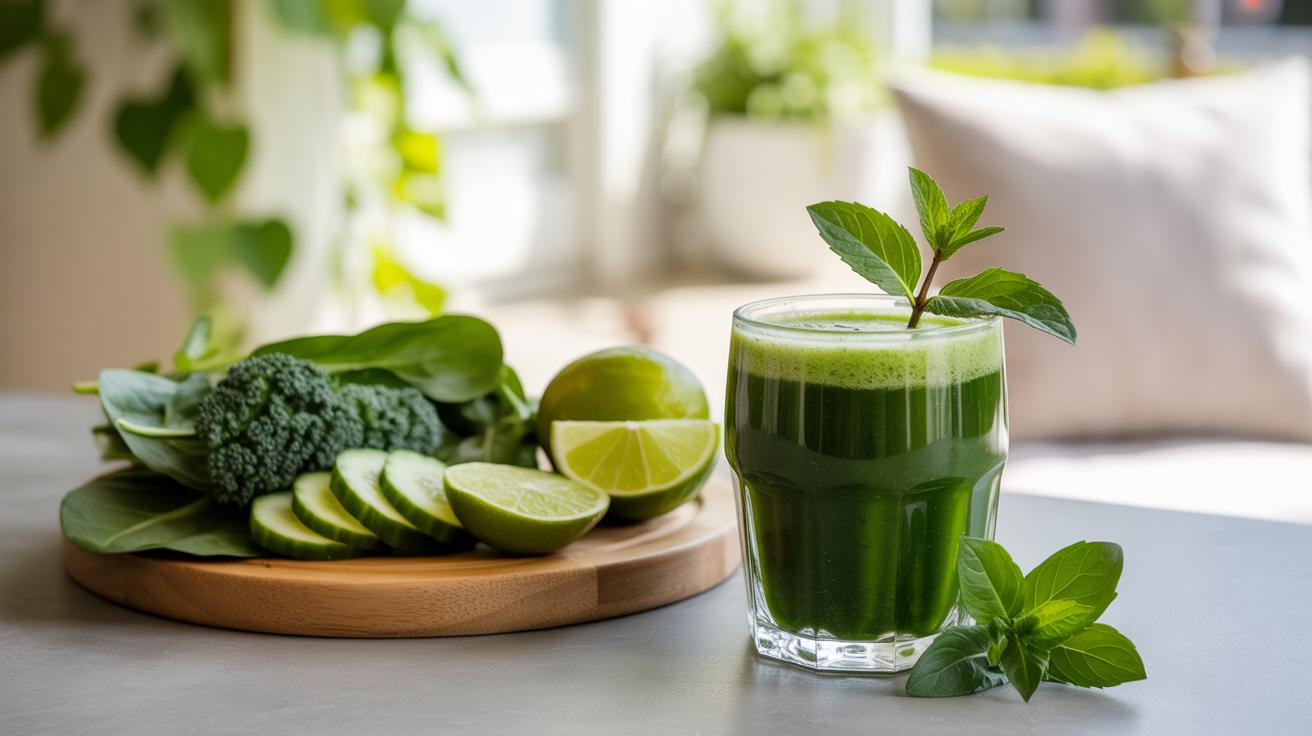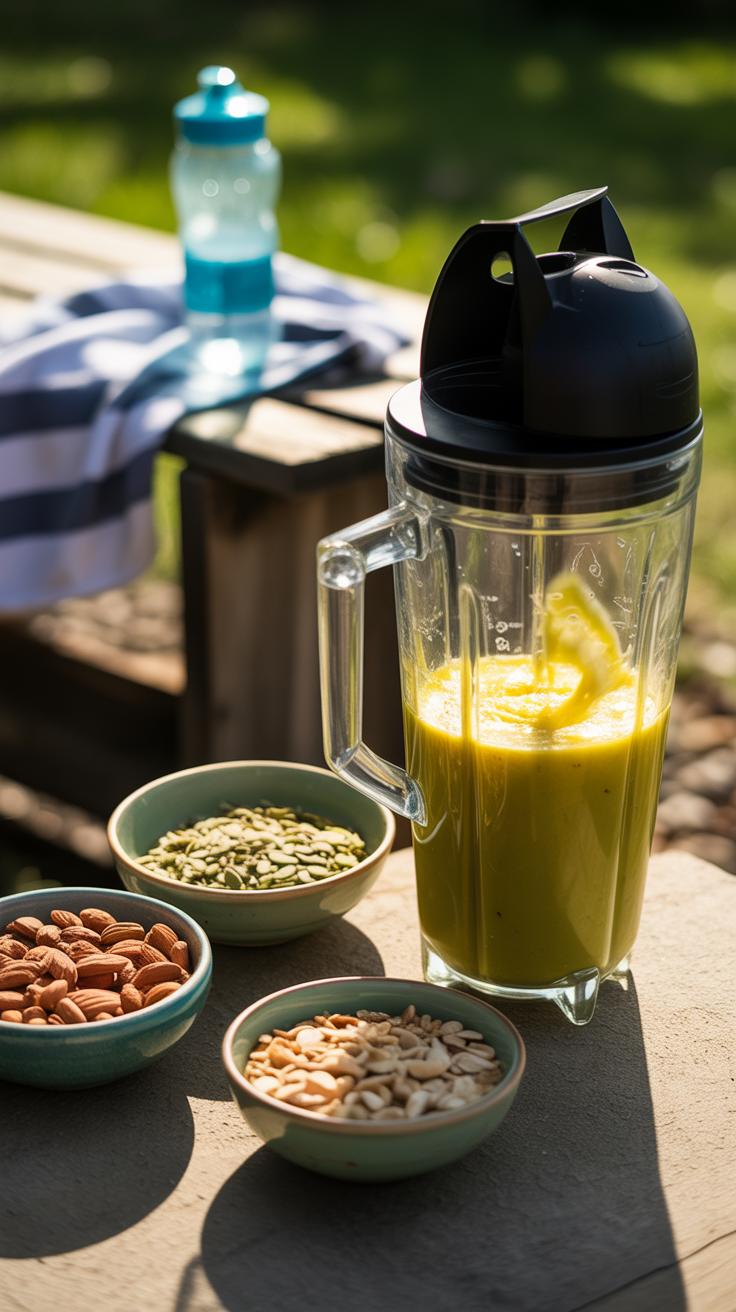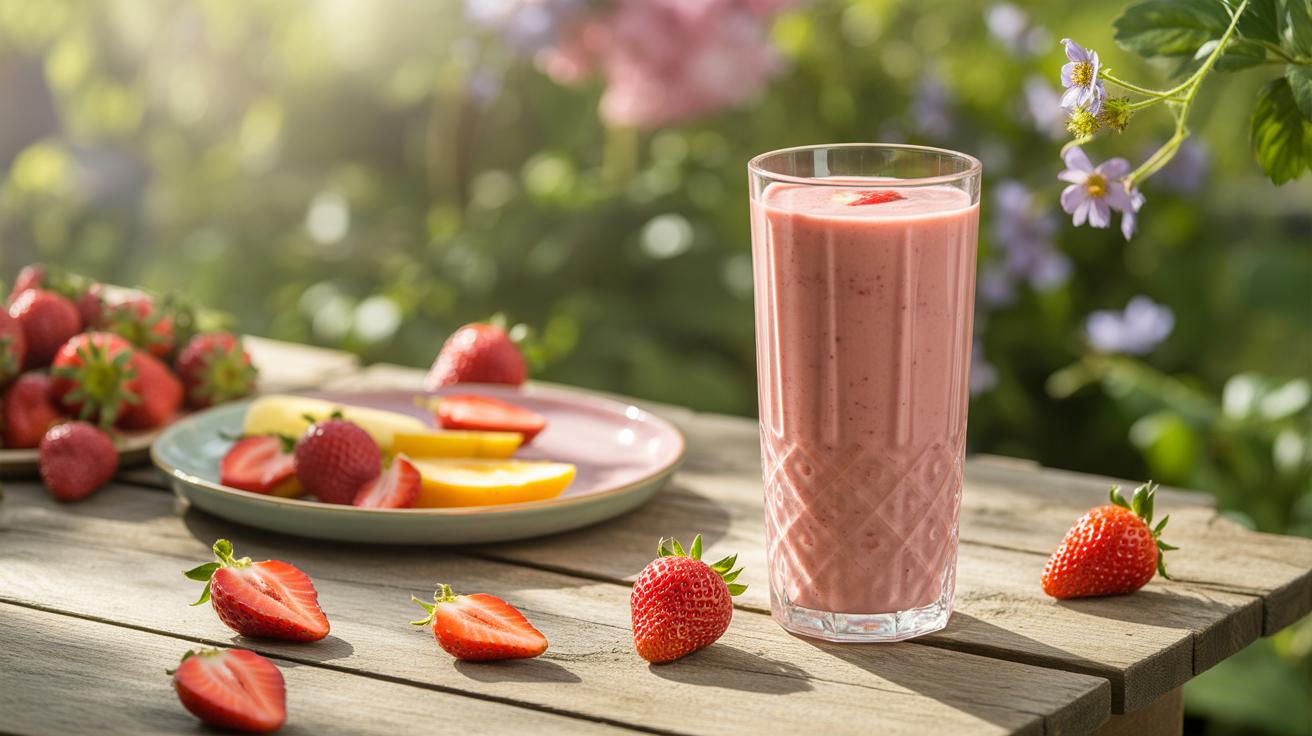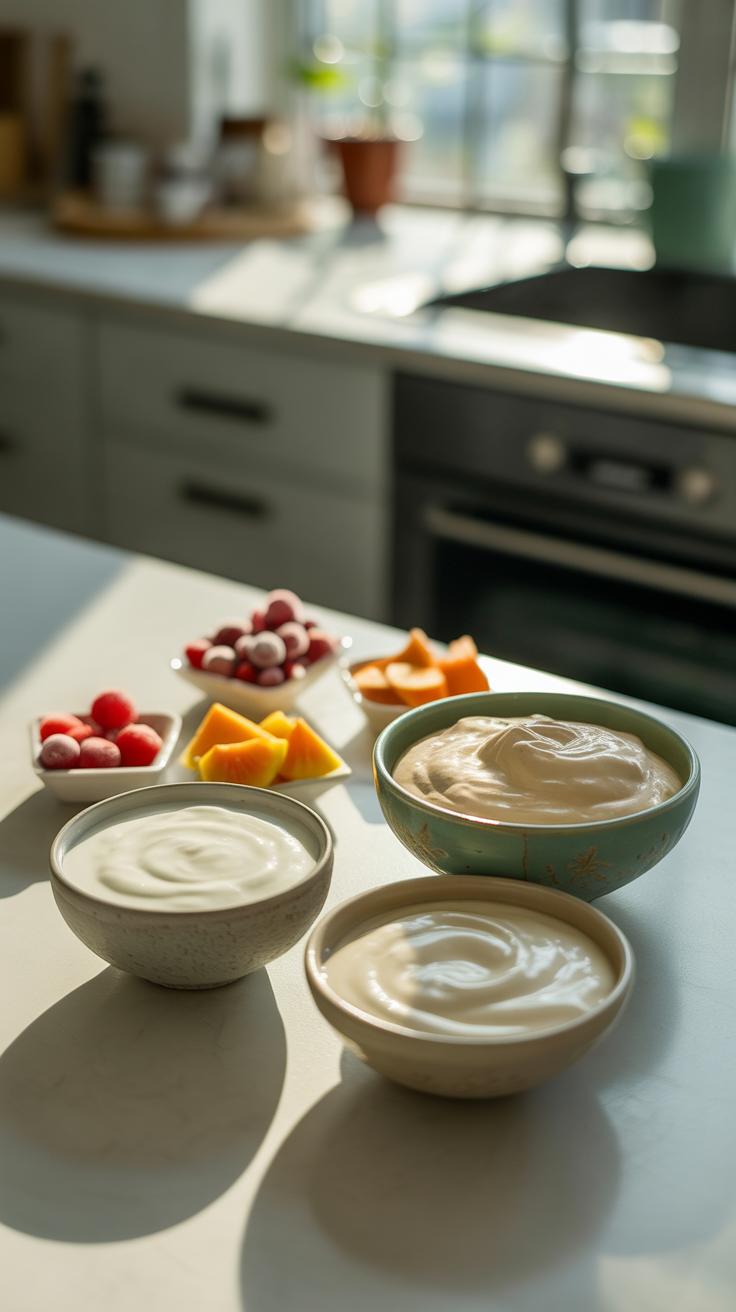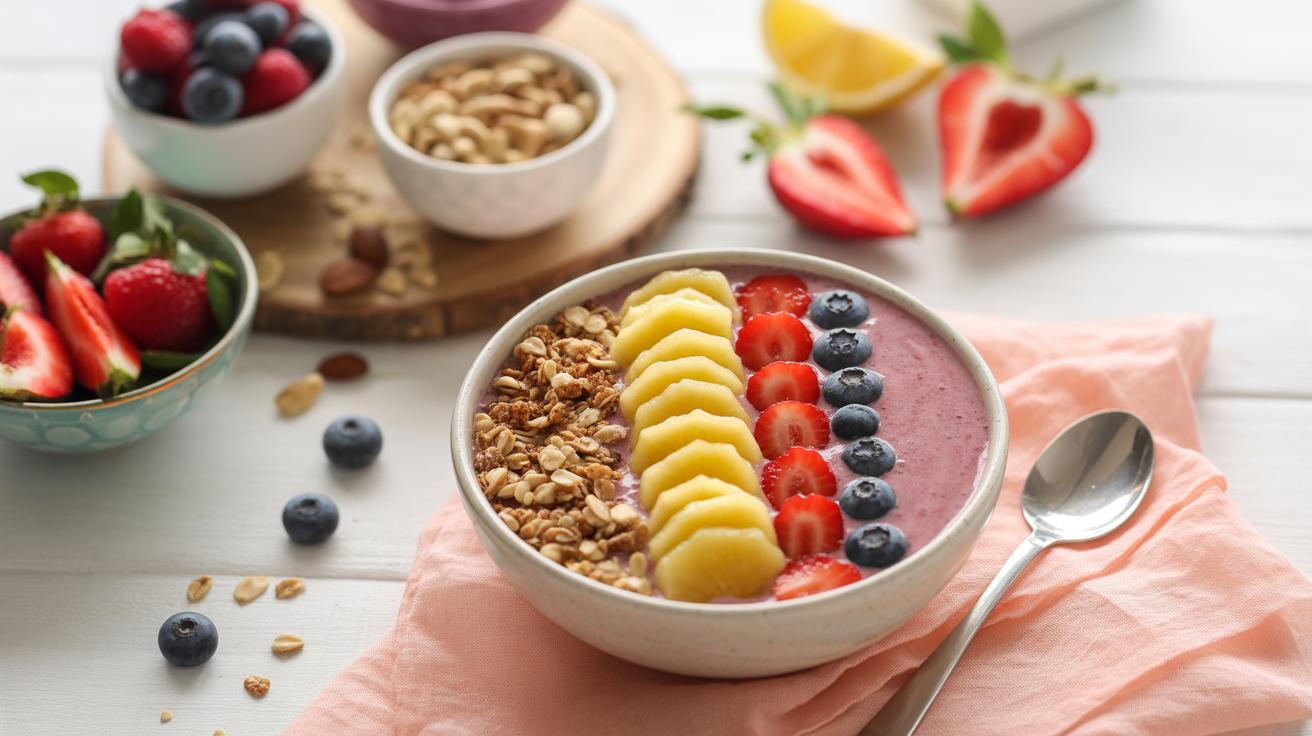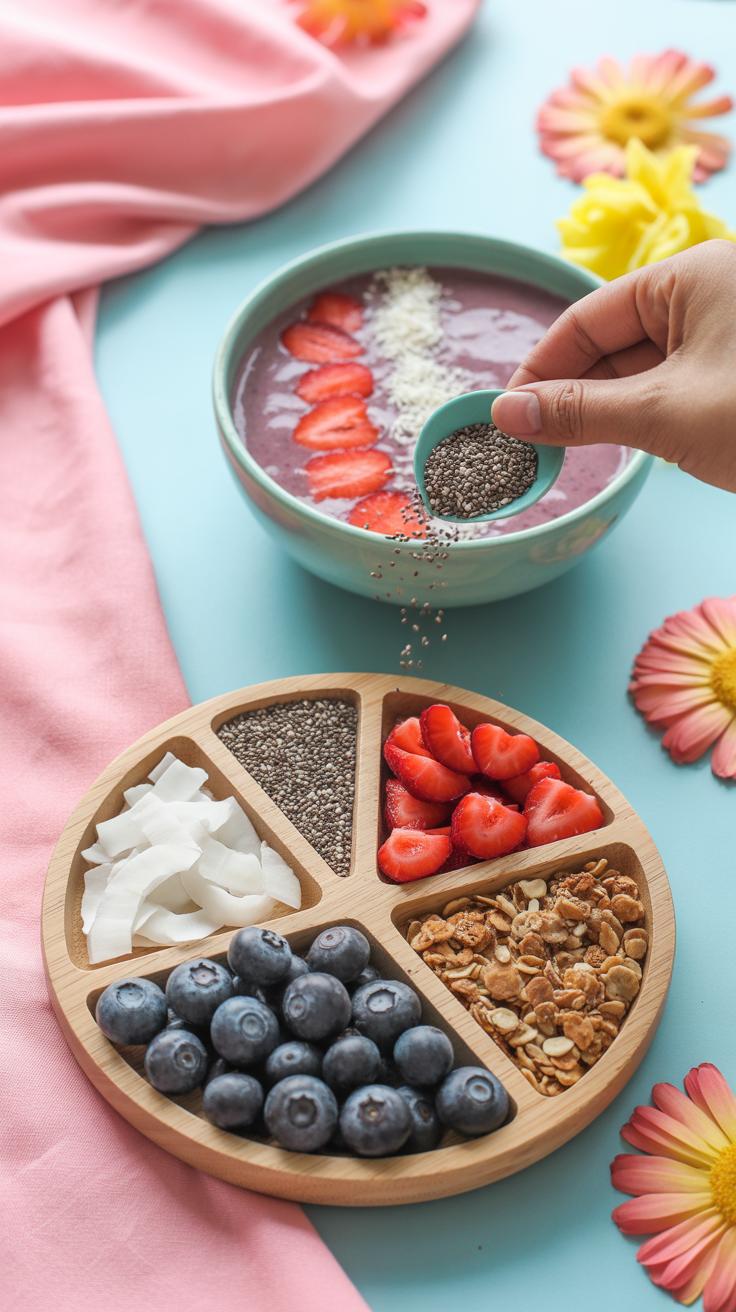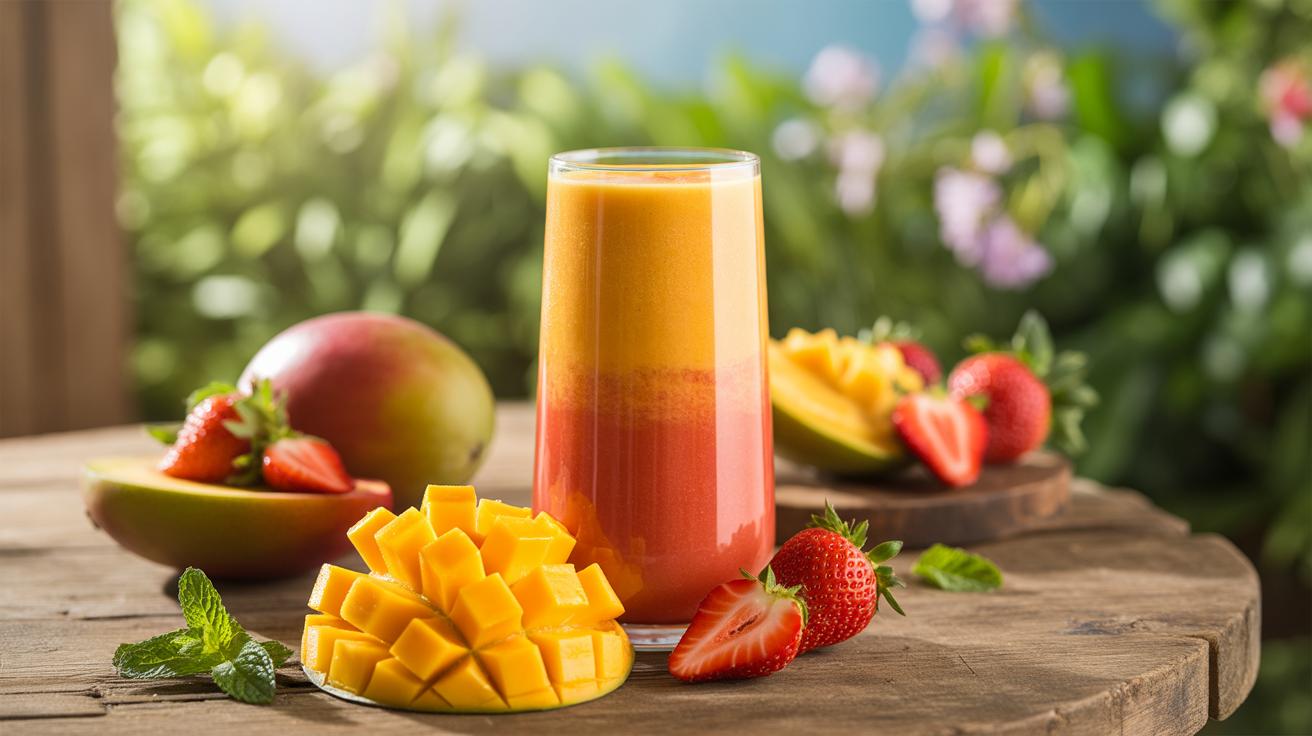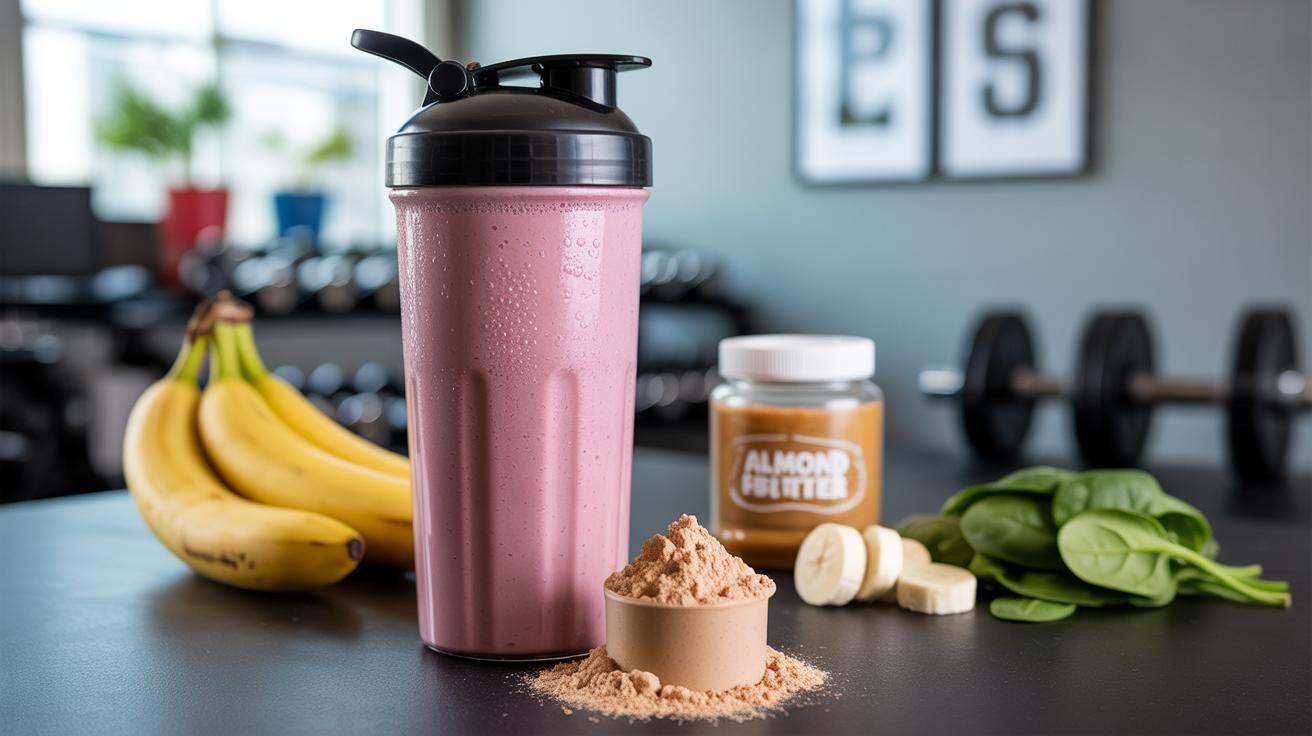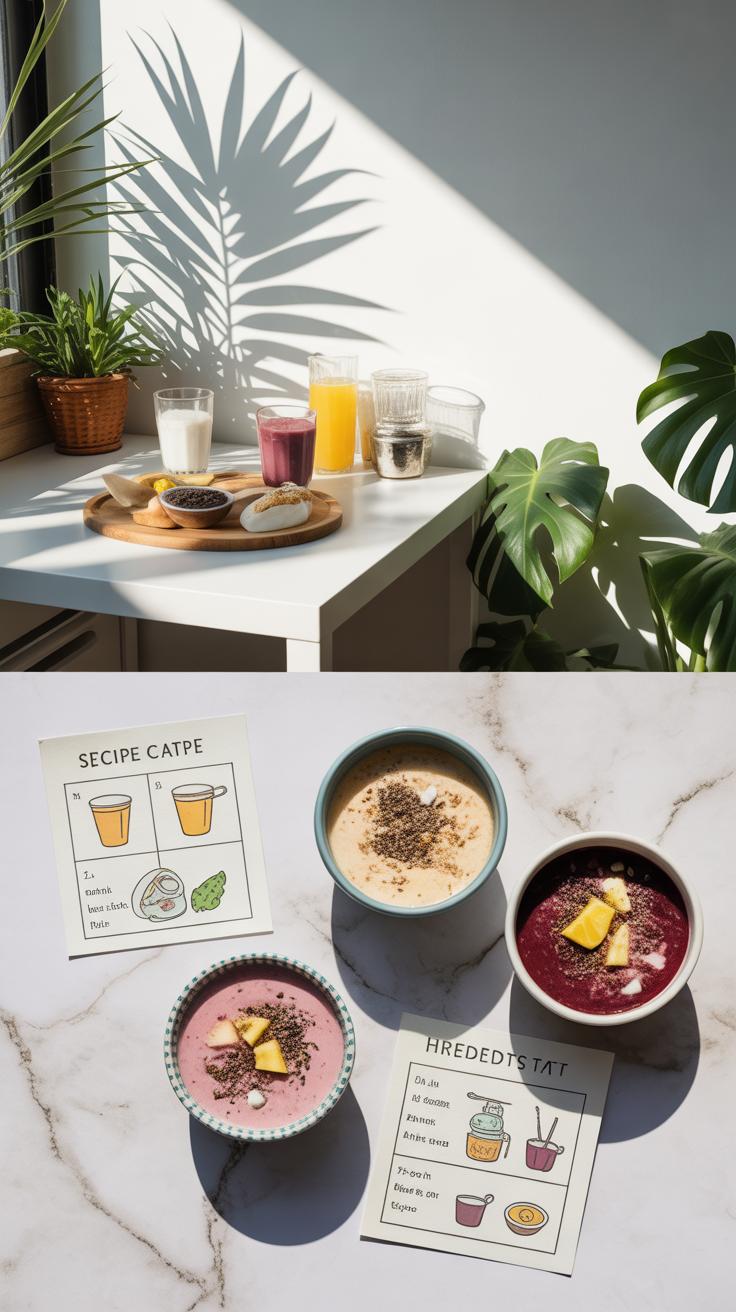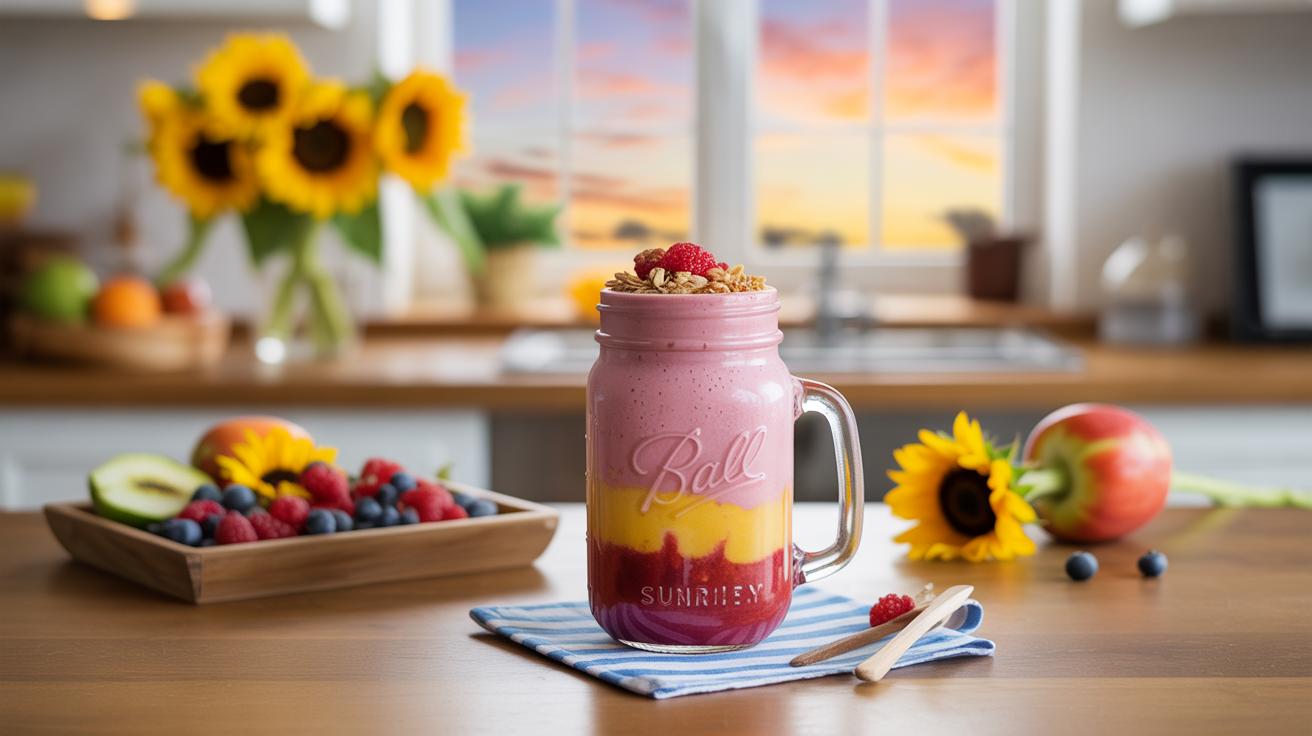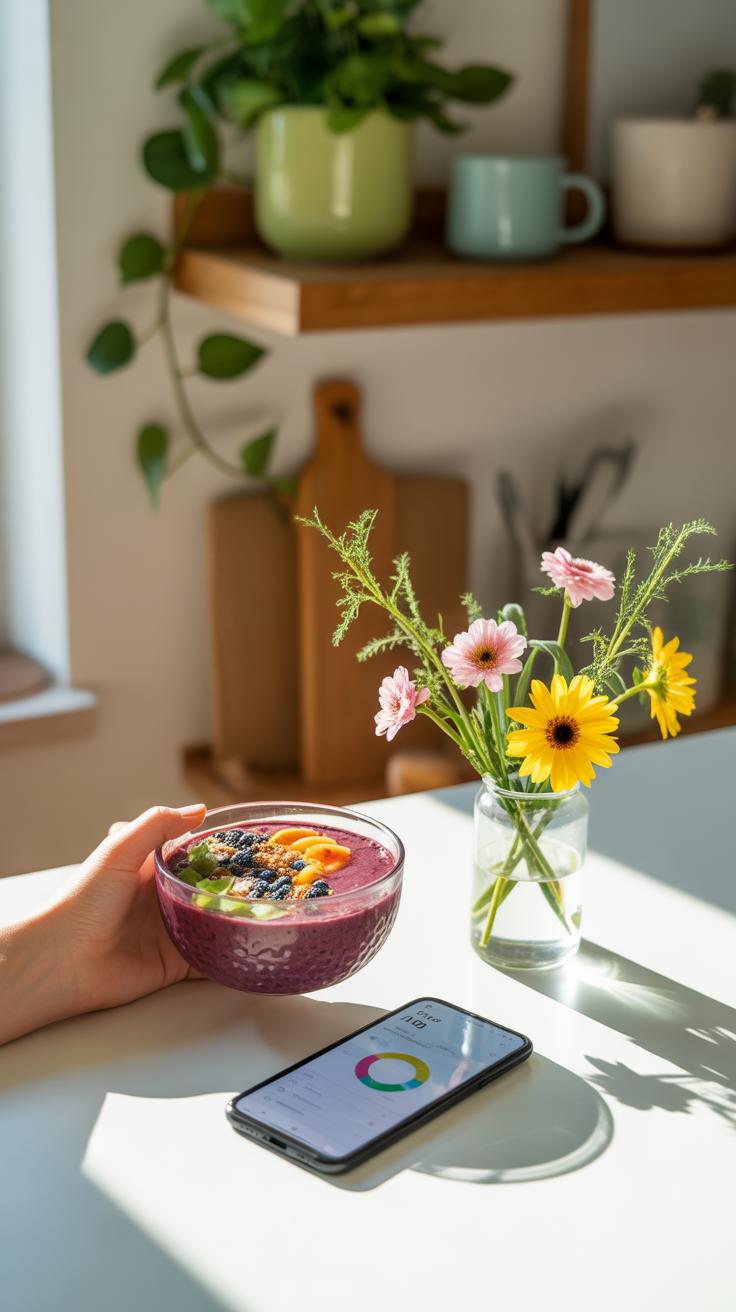Introduction
Ultimate Smoothie Bowl Guide For Hydrating Energy shares simple ways for you to prepare delicious and healthy smoothie bowls. Smoothie bowls mix fruits, vegetables, and other tasty items into a thick blend. This guide helps you learn how to make bowls that give you energy and keep you hydrated.
As you read, you will find out what goes into a perfect smoothie bowl. You will learn about the best ingredients to add for hydration and energy. This knowledge will help you make bowls that fit your taste and health needs. Let’s explore how these bowls can brighten your day and support your active lifestyle.
Understanding Smoothie Bowls
What Makes a Smoothie Bowl Different
Smoothie bowls look like thicker versions of smoothies, but they’re more than just thick drinks. Their texture is dense enough to hold toppings and be eaten with a spoon, unlike regular smoothies that are usually too runny and meant for straws or glasses. The thickness comes because ingredients are blended with less liquid, often frozen fruit or yogurt, which changes the whole experience.
Toppings are a big deal here. They add crunch, texture, and bursts of flavor that you don’t get from a standard smoothie. Think granola, seeds, sliced fruit, nuts—all laid out on top, making the bowl visually appealing and more satisfying to eat. It’s almost a different meal, not just a quick drink.
Basic Ingredients Used
Most smoothie bowls start with a base of fruits like bananas, berries, or mangoes. Usually, you’ll see yogurt or milk mixed in, sometimes plant-based milks like almond or oat milk, contributing creaminess and a smooth texture. Yogurt adds protein and a bit of tang, balancing sweetness.
Natural sweeteners, like honey or maple syrup, sometimes make an appearance, but often fruit provides enough sweetness. Frozen fruit thickens the blend, and fresh or liquid ingredients thin it just enough. The goal is a rich, creamy consistency that supports those toppings without becoming soup-like.
Benefits of Smoothie Bowls for Hydration
Smoothie bowls do more than just taste good—they help keep you hydrated. Because they combine water-rich fruits with hydrating liquids, they provide fluids your body needs every day. It’s easy to overlook how much these bowls can support hydration, especially when you’re busy or just not a fan of drinking plain water.
Water-rich fruits like watermelon, cucumbers, and oranges contribute a surprising amount of moisture. When you eat them blended into a thick, spoonable bowl, you’re delivering hydration alongside vitamins and minerals straight to your system. It’s probably why sometimes I reach for a smoothie bowl instead of a glass of water when feeling sluggish or dehydrated—there’s something satisfying about getting fluids with texture and flavor.
Hydrating Ingredients to Include
Here are some fruits and veggies you might want to include in your next bowl for an extra hydration boost:
- Watermelon – over 90% water and naturally sweet.
- Cucumber – light, crisp, and packed with water.
- Oranges – juicy with the added vitamin C perk.
- Strawberries – often underestimated but largely water.
- Zucchini – works well blended, high water content.
- Coconut meat – adds subtle flavor and moisture.
Each of these ingredients not only tastes fresh but also helps replenish your body’s water stores. If you’re unsure which combination to try, watermelon and cucumber together have this cool, refreshing effect that feels more like a treat than hydration.
Role of Liquids in Hydration
Choosing the right liquids to blend your bowl with matters quite a bit. Water is the obvious choice, but coconut water deserves special attention. It contains electrolytes like potassium and magnesium, which help your body hold onto that hydration longer. Herbal teas, particularly mild ones like chamomile or mint, add subtle flavor without overwhelming your palate—and they come with a mild hydration benefit too.
For some, using dairy or plant-based milk feels natural in smoothie bowls, but they don’t always hydrate as thoroughly as water or coconut water might. So, if hydration is your main goal, you may want to lean towards those lighter, more water-dense liquids. I’ve found that when I use coconut water for my bowls, I feel less thirsty afterward, which is something I didn’t expect at first.
Creating Energy Boosting Smoothie Bowls
When it comes to crafting a smoothie bowl that actually boosts your energy, the choice of ingredients plays a huge role. You want a balance between quick-releasing energy and longer-lasting fuel. Natural sugars found in fruits are great for that immediate pick-me-up. Think about bananas and berries—bananas provide glucose and fructose that your body can absorb rapidly, giving you a quick surge of energy. Berries add natural sweetness but with some fiber that slows sugar absorption just a bit, making the energy feel smoother rather than a sudden spike.
But sugar alone isn’t enough to keep you going all morning. Adding protein and healthy fats extends that energy release over time. For protein, powders like whey or plant-based options supply the amino acids your body needs without heaviness. Then there are nuts and seeds—almonds, chia, flaxseed—that pack both protein and fat, holding you steady when natural sugars start to fade.
Speaking of fats, avocado and nut butters do double duty. They not only add creaminess but slow digestion, so energy doesn’t burn out too fast. Sometimes I find that a smoothie bowl with just fruit leaves me hungry in an hour, but mix in those fats and proteins, and it feels more like a meal, less like a quick snack.
Energy in your body doesn’t come in one neat package; it comes in phases. Quick sugars wake you up, proteins repair and rebuild muscle, and fats keep you feeling full and focused. So layering these ingredients matters. What’s your experience—do you notice a difference when you add nuts or protein to your bowls?
Choosing the Right Base for Your Smoothie Bowl
Picking the right base for your smoothie bowl shapes not only its texture but also how hydrating and energizing it feels. The base blends everything together—so it’s more than just a liquid; it sets the whole mood, if you like.
Dairy and Non-Dairy Bases
Milk, almond milk, coconut milk, and yogurt each bring something different to the table.
- Milk: Offers protein and calcium, which can keep you feeling fuller longer. It adds creaminess but might weigh you down a bit if you want something light.
- Almond Milk: Low in calories, usually unsweetened, and a gentle hydrator. It doesn’t add much protein, so it might not fuel your energy needs alone.
- Coconut Milk: Gives a rich, silky texture and adds some healthy fats. Those fats can sustain your energy but might slow down hydration since they tend to be heavier.
- Yogurt: Thickens your bowl and packs probiotics for gut health. Plus, the protein helps with sustained energy. But it’s less hydrating than watery bases.
Choosing between these often depends on what you want from your bowl—more hydration or more sustained energy. Sometimes you want both, which can be tricky.
Juices and Water as Bases
Using fruit juice or plain water keeps your bowl lighter and boosts hydration directly.
- Fruit Juices: Bring natural sugars that can give a quick energy spike, which might burn out fast. They add sweetness naturally, helping cut through thick or bland bases.
- Water: Does its job without extras—just pure hydration. It lets the other ingredients shine but won’t contribute calories or energy itself.
Balancing juice and water is often a bit of trial and error. Too much juice can overwhelm, while too much water can make your bowl watery and less satisfying.
Overall, your base affects how your smoothie bowl hydrates and energizes you. It’s about finding that personal sweet spot—what keeps you refreshed and energized without feeling heavy or empty.
Top Toppings to Maximize Nutrition and Appeal
Toppings do more than just make your smoothie bowl look inviting—they add essential texture and nutrition too. Without them, you might end up with something that feels a bit flat, both in taste and experience. I’ve found that the crunch or chew you get from toppings can really keep you interested throughout the meal. Plus, picking the right ones can help you stay hydrated and energized, which? well, that’s a big win.
Hydrating Toppings
Some toppings bring moisture along with vitamins, helping your body actually hold onto hydration better. Chia seeds, for example, swell up and hold water, so they give you that slow-release hydration feeling. Kiwi slices add a fresh zing and pack vitamin C, which helps with water absorption. Coconut flakes? They supply a bit of healthy fat and electrolytes without drying things out. I guess it’s about choosing toppings that don’t compete with the bowl’s base for hydration but add to it instead.
Energy-Boosting Toppings
On the other hand, seeds like pumpkin and sunflower can give your bowl a satisfying crunch plus protein and fat, which sustain your energy over time. Nuts, like almonds or walnuts, also add that staying power, but watch the quantity—they can easily tip into calorie-heavy territory. Granola lends both crunch and carbs, pushing your energy up quickly, though some versions are too sugary for my taste. Dried fruits are great little bursts of sweetness and fiber, but not all are created equal; look for options without added sugars. Picking toppings is partly a personal experiment. Which ones keep you satisfied longer? Which feel just right?
Tips for Balancing Flavor and Nutrition
Balancing Sweetness and Tartness
When crafting your smoothie bowl, finding the right balance between sweet and tart can really make a difference – without loading it up with too much sugar. One approach is to mix naturally sweet fruits like bananas or ripe mangoes with tart options such as berries or green apples. That combination often sharpens the flavor and keeps things interesting.
You might be tempted to add honey or maple syrup for sweetness, but often the fruit’s natural sugars are enough. I’ve noticed that when I rely on just fruits, the bowl tastes fresher and less cloying. Sometimes, though, I do wonder if a slight drizzle of something sweet would improve it – especially after a tough workout. The question lingers: does a bit of added sugar actually ruin the balance, or just make it more enjoyable?
Remember, texture also plays a role here. Adding some chia or flax seeds gives crunch and offsets overly smooth or sweet blends, so you don’t feel like you’re just swallowing syrup.
Ensuring Nutritional Harmony
Balancing proteins, fats, and carbohydrates can feel tricky. Yet, it’s the key to making your smoothie bowl truly satisfying and energy-sustaining. Consider tossing in Greek yogurt or a scoop of plant-based protein powder to cover protein needs. For healthy fats, nuts, seeds, or a spoonful of nut butter work well.
Carbs usually come from the fruit itself, but even here, varying sources makes a difference. Mixing berries, which are lower in sugar, with something like oats or quinoa can provide slow-burning energy.
Something I often forget is that fats and proteins slow down digestion, which helps with steady energy release. But if you add too much fat, the bowl might feel heavy and overshadow the refreshing qualities.
Does every smoothie bowl need this strict balance, though? Sometimes I prefer a lighter mix just to hydrate and perk up. Maybe the “perfect” combo shifts depending on your day or mood.
Easy Smoothie Bowl Recipes to Try
Let’s get practical. Sometimes, the simplest approach brings the tastiest and most refreshing results. Here are two smoothie bowl recipes that can actually help with hydration and energy without requiring a long list of ingredients or complicated steps.
Refreshing Hydration Smoothie Bowl
You’ll need: watermelon, cucumber, coconut water, and a few hydrating toppings like mint leaves, chia seeds, and fresh berries.
- Start by blending about 2 cups of cubed watermelon with half a cup of peeled cucumber.
- Add one cup of coconut water—they’re great for keeping you hydrated.
- Blend until smooth but still thick enough to eat with a spoon.
- Pour into a bowl, then top with fresh mint, a sprinkle of chia seeds, and a handful of berries.
This bowl feels very light but keeps you replenished. The cucumber and watermelon bring a cooling effect, while the coconut water offers electrolytes. I always find it surprising how satisfying this simple combo can be.
Energy Packed Breakfast Bowl
For when you need a bit more fuel, this recipe works well. Grab a ripe banana, a tablespoon of almond butter, half a cup of Greek yogurt, and a teaspoon of chia seeds.
- Blend the banana and Greek yogurt until smooth.
- Mix in almond butter and chia seeds, giving it a quick pulse so the seeds don’t turn into powder.
- Pour into your favorite bowl, then add toppings like sliced almonds, a drizzle of honey if you want, or some granola.
This one feels creamy and filling but doesn’t feel heavy—I think the yogurt and chia seeds offer great texture and slow-burning energy. Perfect if you want something that holds you through the morning without weighing you down.
What’s nice here is that both recipes stick to common items you can find almost anywhere. Maybe you’ll try one today—or mix and match the ingredients to suit your taste.
Incorporating Smoothie Bowls Daily
Using smoothie bowls regularly can definitely boost your hydration and energy throughout the day. The key is fitting them into your routine without feeling like it’s a chore. Some people swear by starting every morning with one—because it’s quick, filling, and gives you a fresh kick of nutrients. Others prefer them after workouts, when your body craves fluids and quick energy to recover.
Think about your own day. Are you often rushing breakfast? A smoothie bowl might be a good grab-and-go option that hydrates without weighing you down. Or maybe you get sluggish mid-afternoon—this could be another moment to try a hydrating bowl packed with energizing fruits and seeds instead of coffee or sugary snacks.
To keep it interesting and avoid getting bored, mix up the ingredients and toppings:
- Switch between different leafy greens, like kale or spinach, as your base.
- Rotate fruits seasonally—berries, mango, or even pomegranate seeds.
- Throw in new protein sources such as nuts, seeds, or a dollop of Greek yogurt.
- Experiment with spices – cinnamon or fresh ginger can change the flavor dynamic.
This variety helps keep the nutrients balanced, and your taste buds don’t get stuck in a rut. Plus, it’s fun to discover new combinations that work for you. What’s your favorite topping combo so far? Maybe today’s the day to try something unexpected.
Conclusions
Smoothie bowls are a great way to enjoy many nutrients in one tasty meal. By mixing fruits, vegetables, and hydrating liquids, you can prepare bowls that keep you refreshed and energized. You have learned what ingredients work best for hydration and energy, making your choices easier.
Now that you know the basics and secrets of smoothie bowls, you can start making your own. Remember to pick fresh ingredients and balance flavors to suit your taste. These bowls can become a part of your healthy routine and fuel your body well every day.

